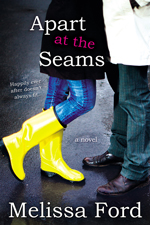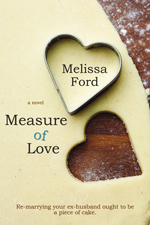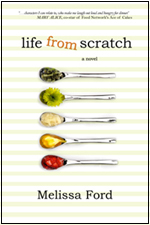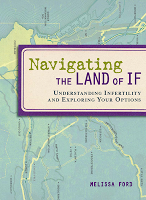Friday Blog Roundup
Again, Happy New Year, to all my Jewish friends. And also Happy New Year to whoever else wants to borrow the traditions. I grant you Jewishness for a day. It’s on me.
We keep adding to Operation Heads Up all the time. Which rocks. So contribute, contribute, contribute. And I keep expanding the book list, so send other ideas for categories. There is now a space for videos and audio recordings (especially meditation tapes that worked for you). And books for speaking about infertility with kids. So send your recommendations. You can access the list via the icon (and hyperlink) on the side bar.
But…now the blogs.
Spanglish at Welcome to the Cysterhood has two amazing posts that took place between last Friday and today. One was about how she made the decision to end fertility treatments. Which is not to say that she is necessarily stop trying to conceive. But she has said enough is enough. And that’s just an amazing brave idea to express. Her other post this week was about how much she loves her students. And as a former teacher, I can definitely relate. It’s a great post for anyone who ever wondered whether your teacher cared about you and enjoyed being with you as much as you enjoyed being with them. And, yes, it is true. We really enjoyed all that time we spent together. I don’t miss waking up at 5 a.m. each day or creating lesson plans or grading papers. But I do miss the students. And there is a certain heartbreak that exists when you’re an infertile teacher. You spend more awake hours with these kids than their own parents, but they leave you and go home and it just reminds you of what you don’t have. It’s like attending a baby shower every single day of the year. But it’s also amazing to watch them grow and change. And learn. But it’s so hard because you invest so much of yourself into these kids, and then they leave, and you never learn how their life turned out.
Just below her, linkage-wise, from my blogroll is Dr. Spouse over at What am I? She had such an interesting point inside a recent post: “So, another cycle, another wasted test. It’s now 2 years since we started trying to get pregnant. If I calculate it rationally, that’s a maximum of 26 cycles (28 days each) but of those I was pregnant for, say, 3, having a break for 2, on medically enforced abstinence for 1 and out of the country for the crucial week of another one. So that’s 19 cycles and probably 3 measurable pregnancies. So I would imagine your average infertile would laugh me court of court if I claimed to be infertile too. Even if there were only 2, that’s 1 every 9 months. But I don’t feel very fertile. Again, I don’t feel as if I’ve had so many pregnancies and so many miscarriages – not compared to some people – some of whom seem to get pregnant really easily, perhaps that’s how they fit in so many miscarriages? Or am I just misperceiving the time because time in my world goes slowly, but only reading their blogs it seems to go quickly in their world.”
Okay, so two interesting points. Both present the idea of what makes someone infertile and what makes someone Infertile. As in, with a capital “I”. Is it a matter of attitude? Is someone who gets pregnant with their first IVF attempt less infertile than someone who needs 5 tries to conceive? And how many miscarriages qualifies you for the big “I”? I’m saying this because, in my opinion, when you get the diagnosis of infertility, you are infertile. And we all have varying degrees of difficulties getting and maintaining pregnancy, but does it really matter? This quantifying of infertility? I mean, if a person can’t get pregnant, they can’t get pregnant. Or if they can’t carry to term, they can’t carry to term. I don’t think 5 miscarriages trump 3 miscarriages because…well…there should be no trumping in general. Tragedy is a tragedy is a tragedy and frustration and sadness are frustration and sadness. There are people going through infertility who have never been pregnant therefore they’ve never miscarried. And is that worse or better than a person who can get pregnant easily, but miscarries each time? And this is my opinion: neither is better or worse because (to quote Smarshy) “they’re just a different bag of ass.”
Which brings us to Smarshy. Oh…Smarshyboy. I just found him. Can you believe it? I know the rest of you all knew about his blog long ago (okay, so not that long ago since he started blogging in August), but I just found him and I’m excited because he (now, don’t move too quickly and scare him) provides the elusive male point of view. We know it’s out there. We know that infertility is biting you in the ass as well. That you want a child just as badly as we do. I think your blog is so important because it gives voice to emotions that women have always suspected were being experienced by their husband’s but had no tangible proof. And now we have your words. So, thank you. And keep up the good work. And I hope I didn’t smother you with this virtual hug.
Lastly, Barely Sane over at Infertility Licks is talking about the hoopla (wait for it, wait for it, this is a very funny pun) of hoops (there is was. Wasn’t that hysterical?) that people believe she is jumping through during the adoption process. In my opinion, the general public has such a small breadth of knowledge when it comes to what it takes to do fertility treatments or what it takes to adopt that they can’t even begin to imagine any of these processes. They know we did fertility treatments, but they have no idea what went into it. And I don’t think that the general public’s perception of adoption is that you fill out some paperwork and they hand you a baby. Hence why they say stupid things like, “you should just adopt and then you’ll get pregnant.” Anyway, if you actually want to know what going through fertility treatments is like (as if you didn’t know), head over to her site. It’s a great post.
September 22, 2006 Comments Off on Friday Blog Roundup
Happy New Year
This weekend is the Jewish New Year. Which makes a bit more sense placementwise than the secular calendar’s new year marker. I mean, dead of winter? As the start of a year? How do you think about rebirth when there is snow on the ground? Rosh Hashanah isn’t that much better–fall doesn’t have renewal characteristics like spring, but at least you have harvesting, gathering, contemplating. As I said, just a bit of sense.
There are three traditions (perhaps old wives’ tales) that infertile women do during this time. Two happen on the second day of Rosh Hashanah this year, which would be this Sunday, the 24th. The first ceremony is called Tashlich and it entails going to a moving body of water (river, stream, lake, ocean) and “casting away” all of the crap you’ve experienced this past year. The failed cycles. The injections. The fights with your spouse over infertility choices. The miscarriages. The exams and procedures and blood work and sonograms. All of it. Figuratively cast it away. Okay, so you’re technically supposed to cast away your sins. But let’s just pretend that my sins are much more miniscule in importance than all of the bad feelings tied to infertility. I used to write out a long list of all the things I wanted to close off and forget (forget the emotions and pain–not forget the lesson learned) from the past year. And then I would rip it up and throw the pieces in the water because the point is to not hold on to these things and take them with you into the next year.
That night (the second tradition), people eat a pomegranate. It’s part of this larger concept called first fruits, but infertile women have adopted it as a way to ensure good fertility in the coming year. We not only ate the pomegranate ourselves, but shared it with my parents who had already gone through infertility. We just thought that the more people on our side, the better. So, we had at least four people pushing for good fertility for us each year. So, I would recommend getting together with friend to eat the pomegranate. Or your lady-when-waiting or sibling or parents. And just…watch out for stains. And thinking about the future.
The final tradition happens a few weeks later after the holiday of Succot. Succot is a harvest holiday and the oversimplified description of this holiday is that it’s a time when Jews celebrate the fall harvest by building these temporary shelters (called a sukkah) and spending time as a community within them. Some people sleep in them for the 8 days of the holiday. Others just hold meals in them. In each sukkah is a set of braided leaves (called a lulav) and a small, lemon-like fruit (called an etrog). You shake the lulav and etrog in several directions and recite this prayer when you enter the sukkah. Damn, when you have to explain your own holiday, it sounds so much weirder than when you’re just celebrating it.
When Succot is over (this year on October 15th), the etrog is given to a couple who is trying to conceive and the woman bites the stem (called the pitom) off the top. And it’s supposed to bring her a pregnancy within the year. We were given the etrog two years running. I still have the little, shriveled etrogs and the wooden stems inside a cup in my living room. So how do you get the etrog? I don’t know if you’re not Jewish. I mean, you could buy one, but I’ve always assumed that it was supposed to have been used during the holiday to have it infused with extra spiritual powers. You could call any synagogue in America and explain your situation and ask them for their etrog when the holiday is over. It saves them the uncomfortable task of trying to figure out the infertile couple in their congregation and offer it to them.
And all these things…do they help? Who knows. I think tashlich is a wonderful tradition for everyone. To just throw away all the bad feelings that are weighing you down. The rest of it? How could it hurt?
September 21, 2006 Comments Off on Happy New Year
My Little Golden Book of Body Fluids (Update #1)
I had a writing professor in college who had a rule called the Conservation of Bodily Fluids. The idea was that college students, unable to stretch creatively, depended on the excretion of body fluids in order to make their point. Stories from new writers are filled with vomit, blood, and tears. In his class, you were not allowed to use any body fluids in a story unless it was integral to the plot. Luckily, as I write my new little Golden Book of Secondary Infertility, I can use all the body fluids I want since IF is all about the body fluids. Three pages of gushing cervical mucous. Ten loooooooong paragraphs about my uterine lining. And, of course, my new focus: blood blood blood.
I went to the GP today and was pleasantly surprised by her reaction. I didn’t have to pull out my get-some-confidence post-it note that I had tucked into my pocket in case my lip started quivering as I asked her about thrombophilia (while I stared at her enormous pregnant belly. HER ENORMOUS PREGNANT BELLY). I told her about the children being IUGR, my implantation issues, and the family history of thyroid problems. And she said, “you’re right. You should have this checked out before you try to conceive again. If there is something wrong, there are things you can do. If it were me, I’d want to know what we’re playing with.”
What? No arguing? No laughing at me? And you’re sure you’re a doctor? With a real medical degree? I did not look this gift horse in the mouth. She wrote me a referral, which isn’t totally necessary with my insurance, but certainly looks good for insurance purposes and getting in with a top specialist. I called said specialist, a hematologist that my friend used, and was able to get an appointment in late October. So… stay tuned for blood, blood, and more blood stories.
And…as a side note…if there is nothing wrong, great. But if there is something wrong, I owe it to all of the stirrup queens who shared their stories and advice for getting it diagnosed. Without sharing information, I wouldn’t have even known the questions to ask. And that’s why I’m proud to be part of the sisterhood. Thank you.
September 21, 2006 Comments Off on My Little Golden Book of Body Fluids (Update #1)
You Have Got To Be Kidding
So if news comes in threes, here is your third article about infertility this week. Complete with requisite twisting of the facts for maximum frustration by the infertile reader.
The article is about PGD and follows below. With the article in black and my comments in red. Why red? Because I’m so freakin’ angry. And yes, Carolyn, this is another reporter who needs an email sent to his inbox explaining how the media has a duty to present–not twist–facts.
VITAL EVIDENCE
Increasingly, Couples Use Embryo Screening
Thursday, September 21, 2006; Page A02
More and more couples are turning to an embryo-screening technique that allows them to choose the genetic makeup of their children, according to a survey released yesterday in the online edition of the journal Fertility and Sterility. (Yes, it allows them. Yes, it is possible. No, that is not the primary way it is being used EXCEPT in cases where you are screening for a disease that runs in a specific sex).
Some (note the extremely scientic word “some“) use the test so they can give birth to a child genetically similar to a sick sibling in need of a bone marrow transplant from a matched donor. (How many–give a percentage. Some could be under 1% or some could mean 50%. If this is truly noteworthy, give the specific number of siblings created this way). Others are screening for genetic abnormalities, including some for which the test has not been proved useful. Still others are using it to get a baby of the sex they want. (Again, how many others? How many people have truly gone through IVF and PGD and paid the thousands and endured the treatments in order to get a specific sex of a child that is NOT linked to preventing a genetic illness)
Pre-implantation genetic diagnosis, or PGD, starts with the creation of a “test tube” embryo. At the eight-cell stage of development, one cell is removed, apparently (apparently? This is scientific writing?) without causing lasting harm, for testing. Embryos that pass the test are allowed to develop further and are transferred to a woman’s womb. Others are frozen or discarded (discarded–with the twist being that they want the reader to believe that perfectly healthy embryos are being discarded).
The survey of 186 U.S. fertility clinics, conducted by the Washington-based Genetics and Public Policy Center, found:
· About 75 percent of fertility clinics now offer PGD.
· About 3,000 PGD screenings were performed in 2005 — in 5 percent of all in vitro fertilization procedures.
· Sixty-six percent were done to screen out embryos with chromosomal abnormalities that were feared because the mother was older or had a history of in vitro fertilization failure or miscarriage caused by chromosome problems — even though PGD has not been deemed a reliable test for these problems. (Truly, if it’s not reliable at all, why use the technology? Oh, or are you saying that like all things medical, it’s not a perfect treatment with 100% reliable results? Sort of like cancer drugs. Works for some people, not for others. So…I guess by your logic, we should throw out everything that’s not 100% reliable. All chemo drugs should be dumped out right about now…)
· Forty-two percent of clinics doing PGD offer sex selection, and 9 percent of PGD is for this purpose. (Twist, twist, twist. Yes, sex selection in order to not transfer embryos of a certain sex if that sex is going to be carrying the genetic illness)
· Twenty-four percent of clinics offer PGD to get a match for a sibling in need of a transplant, about 1 percent of all PGD. (Offer it–it’s not necessarily utilized. But they offer it. Twisty twister twisterstein).
· Twenty-one percent of PGD clinics were “aware of” errors having been made — including children born with the problem that was supposed to have been screened out. (Because, as stated before, it’s medicine. And medicine is art. And sometimes treatments fail. And sometimes tests fail. And it’s a matter of not being able to control all circumstances because you’re not operating in a vacuum. And is it an error if it doesn’t work? I don’t know. If I had cancer and the treatment didn’t work for me, I wouldn’t call it an error on the medication’s part. Or my doctor’s part. I would call it the best try. Because medicine is not like other branches of science with highly replicable results).
— Rick Weiss
Oh…Rick. Ricky. Your article made me so angry this morning. What was its point? To scare the public about the far-reaching possibilities of PGD? To help the public understand the devestating process many couples are going through in order to achieve pregnancy? Where are the articles talking about how scary it is that toxic medications exist that could essentially poison a body? Because when new chemotherapy drugs come onto the market, it’s cause for celebration and hope. But when a new fertility technology or mental health drug comes onto the market, it’s cause for many articles warning readers about how dangers or unethical nature of these new advances.
Am I pro-PGD? Of course. Is it perfect? No. But show me something in medicine that’s perfect, 100% of the time. This is what I can show you–a couple who has endured countless pregnancy losses who is now pregnant due to PGD. And…well…like I borrow from Martha Stewart, it’s a good thing.
September 21, 2006 7 Comments
Holy Crap (Children and Crickets Mentioned)
I was in between giving the twins a bath tonight when I looked up (how did I not notice this until twenty minutes into bath time–I have no idea) and saw a cricket on the ceiling. And you’re going to say that I’m exaggerating, but this thing was larger than a human child. With feelers slithering in every direction. I was going to die. DIE.
And I’ve been trying hard not to pass along my dire fear of crickets to my children. I mean, truthfully, I’ve been trying to raise them to BE my cricket killers. They are of no help to me if they are as paralyzed by fear as I am. Holy crap. And did I mention that this cricket was the size of a small automobile? Clinging to my ceiling.
I have to suck it up and pretend to be brave in front of them, so I run downstairs for a chair and fly swatter, chirping along as if I’m just skipping off to refill a martini glass at an open bar (chirp? Why did I write chirp? It’s as if I have communed with the crickets). And I try to smack it several times, each time smiling down at the kids and saying things like, “I’m just being silly, aren’t I? Just smacking the wall like a lunatic. Ha ha ha. Nothing to see here. Just me being silly.” And whatever you do, don’t come in this bathroom. There is a cricket, the size of two monster trucks that has wedged itself into the corner. And I don’t want you to see what I’m hitting and ask about corporal punishment or any other uncomfortable subject.
Since I don’t want to spray chemicals near the kids, I decide that the sustainable living solution to cricket removal would be to spray water. Oh…and then beat the crap out of it when it moved into a better space (and while I’m fairly certain that cricket murder is not part of the general sustainable living ahimsa motto, I was not going to be able to live in a house with a cricket. A cricket the size of four football fields.
I spray it and instead of crawling a few inches to the left or right, it jumps. At me. In slow motion. And I dive off the chair into the bathtub. The full bathtub. Sending a tidal wave of water onto the bathroom floor. And screaming the entire way down. My cargo pants have absorbed water up to the thighs. I am wearing a pair of heavy, grey socks. I am still batting at the air with my fly swatter, trying to locate it. My daughter steps into the bathroom and examines the situation. “Mommy in the bathtub. With clothes on.”
At this point, I must explain somewhat that I’m searching for my friend, a cricket. Could you help me find my friend? And I feel like the bad guys in Pete’s Dragon who try to coax the little boy out of the swamp by promising him cake and ice cream. Oh, cricket, come out, come out. I’ll give you…whatever crickets love. I stood in the water for about ten minutes, trying to prod the bath towels on the floor with the tip of my fly swatter, absolutely certain that it was going to jump out at me.
But it was nowhere to be seen. And I finally needed to step out of the tub, peel off my socks and pants, and bring them into my bathroom to throw into the bathtub until I could deal with them later. My kids followed, chirping (that word!) on about how mommy was in the bathtub. And no clothes in the bathtub. And mommy’s socks are wet. And this is all fine and good, but how about finding that goddamn cricket for me? What good are you? What good are you? There is a cricket, about the size of Pluto, somewhere in this house. IN THIS HOUSE! IN MY HAIR! THERE IS A CRICKET IN MY HAIR!
And I know this because it jumped out of my hair and landed on the door. My thick, dark, curly, cricket-hiding hair. And I screamed. And screamed. And the kids sobbed because I was screaming. And like a lunatic, I raced over to the other bathroom, grabbed my fly swatter and barreled back through my bedroom screaming, “get out of my way!” before I smacked it with all my might against the door.
And that’s how I killed my first cricket.
And as we all stood motionless after the toilet flushed the cricket away, breathing heavily while I still batted at my hair, my son signed and said at the same time, “all done. Please. All done.”
Yes, all done. I am done. I am fried. Go to bed so I can go downstairs and have a stoli and soda. No, on second thought, if it’s okay with you, I’m just going to chill in your room for the next half hour trying to calm down. You’ll protect me, right? Now that you know what to do? Please let me pass along great cricket hunting skills instead of my cricket fears. You really weren’t supposed to witness that.
September 20, 2006 Comments Off on Holy Crap (Children and Crickets Mentioned)












